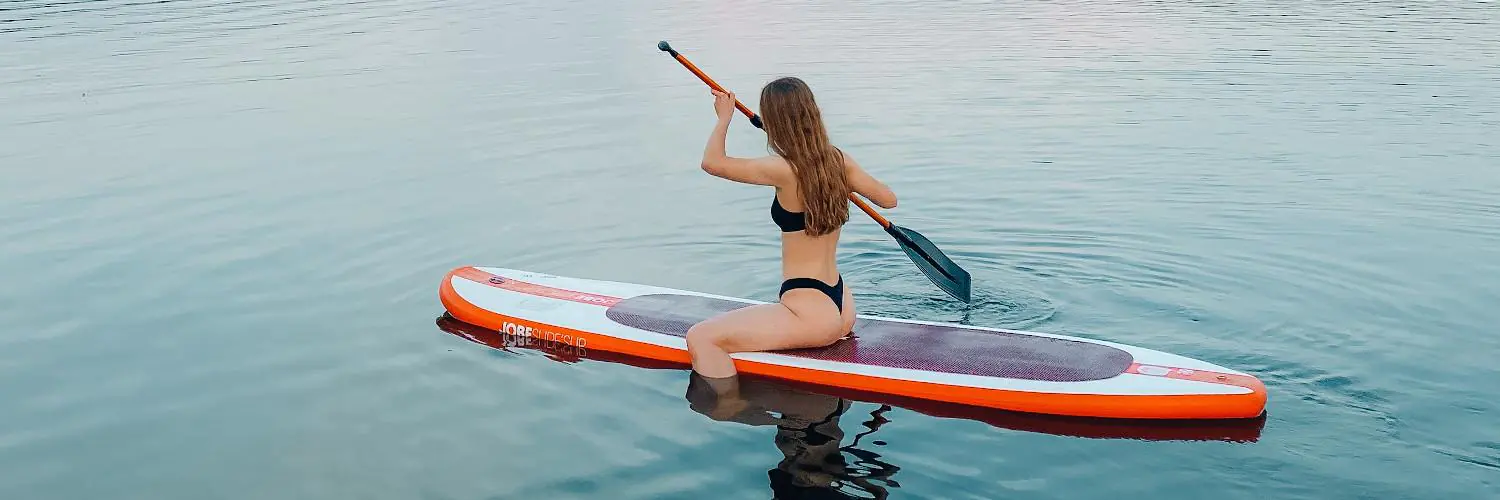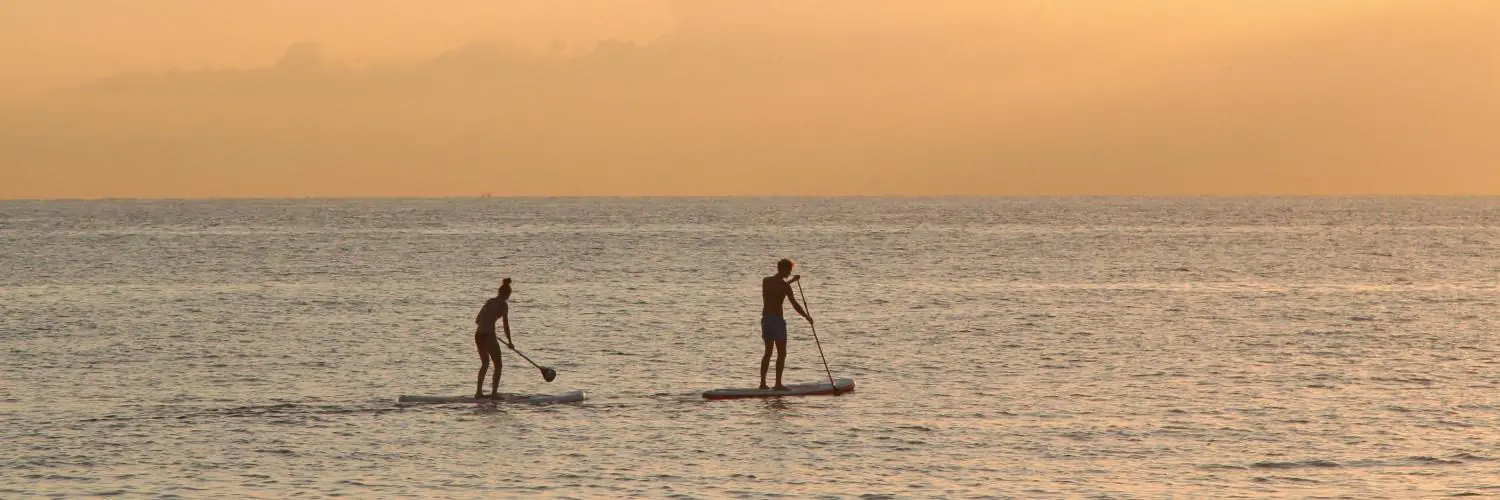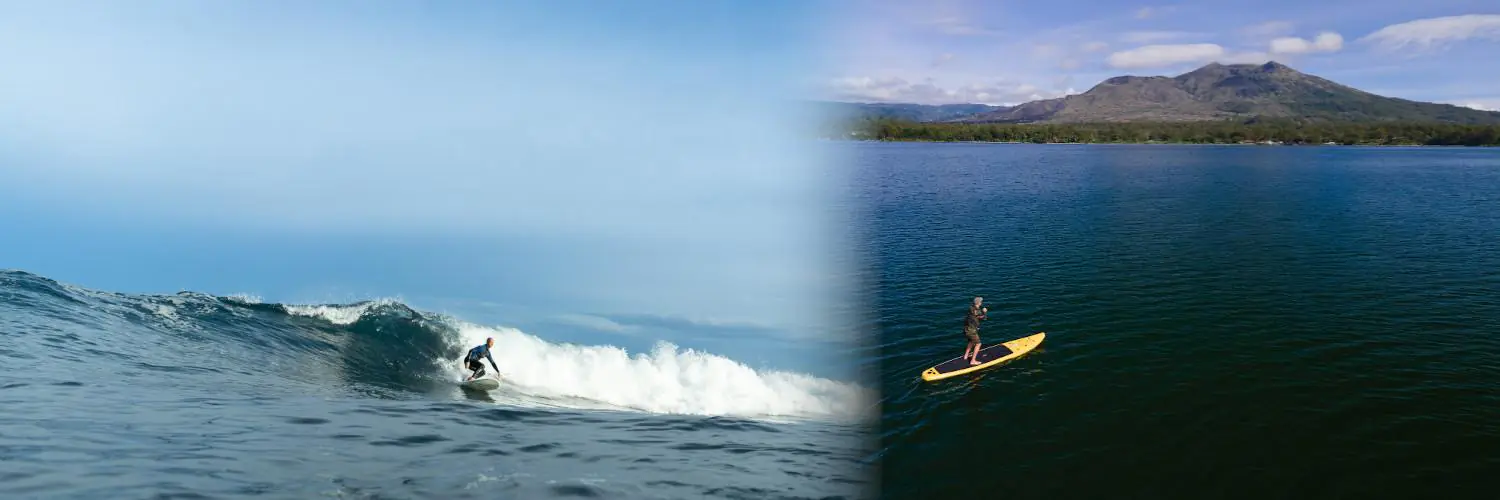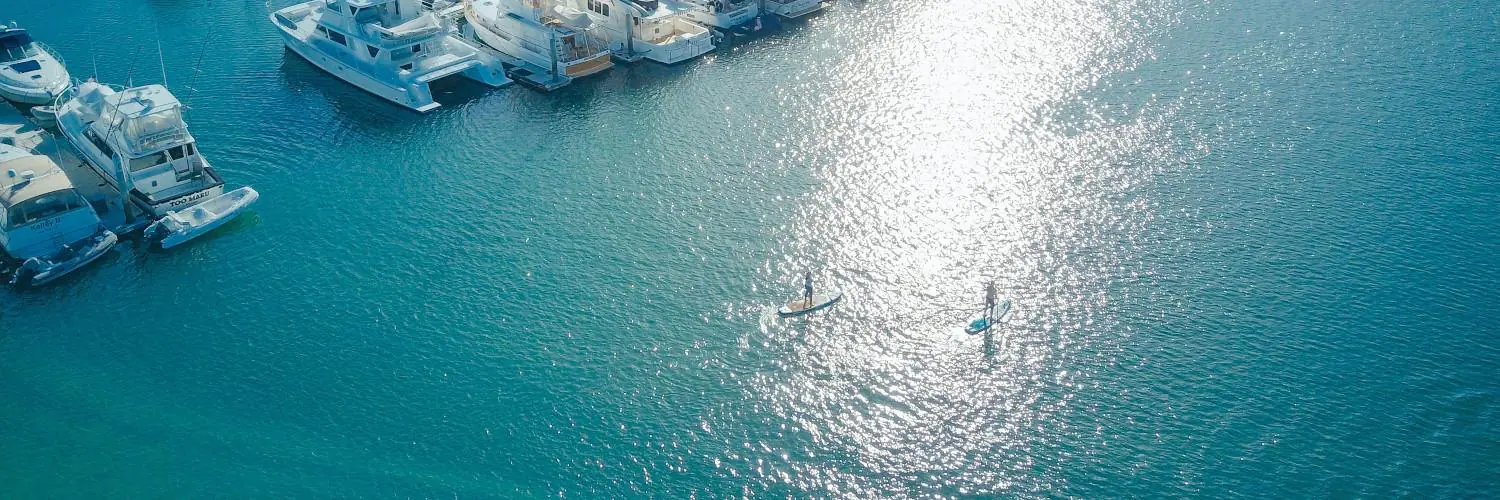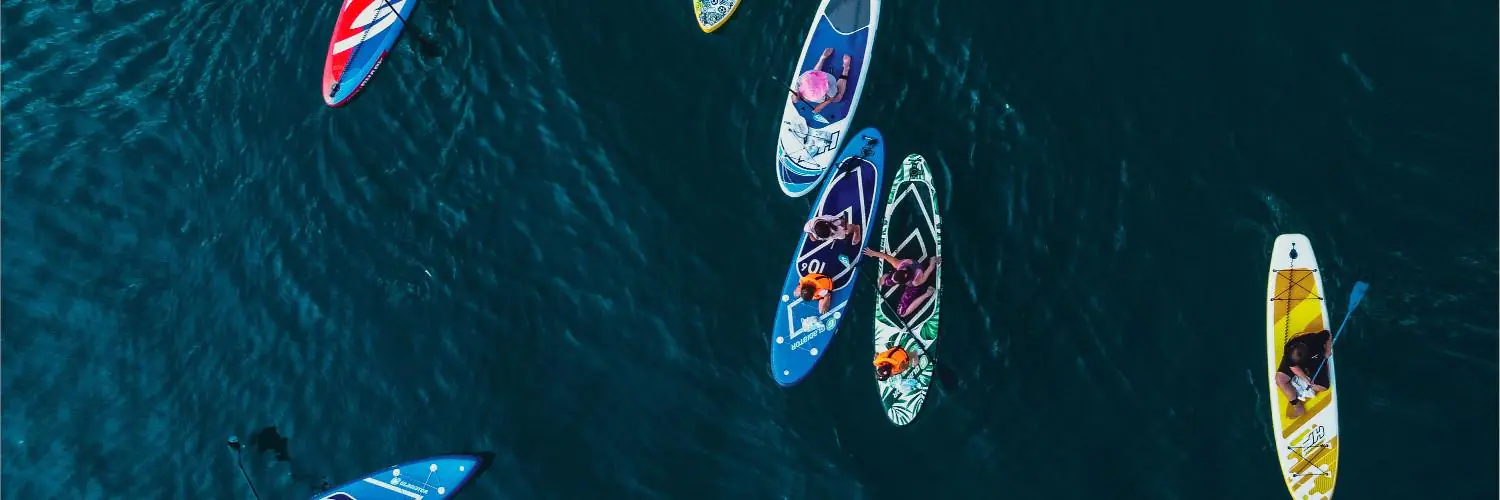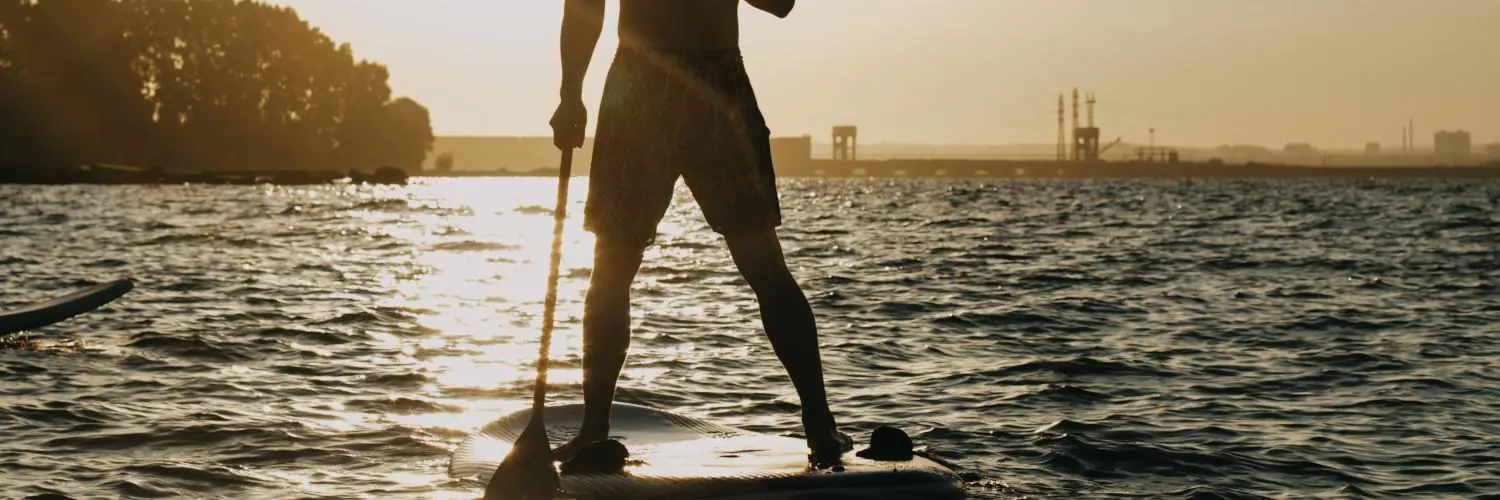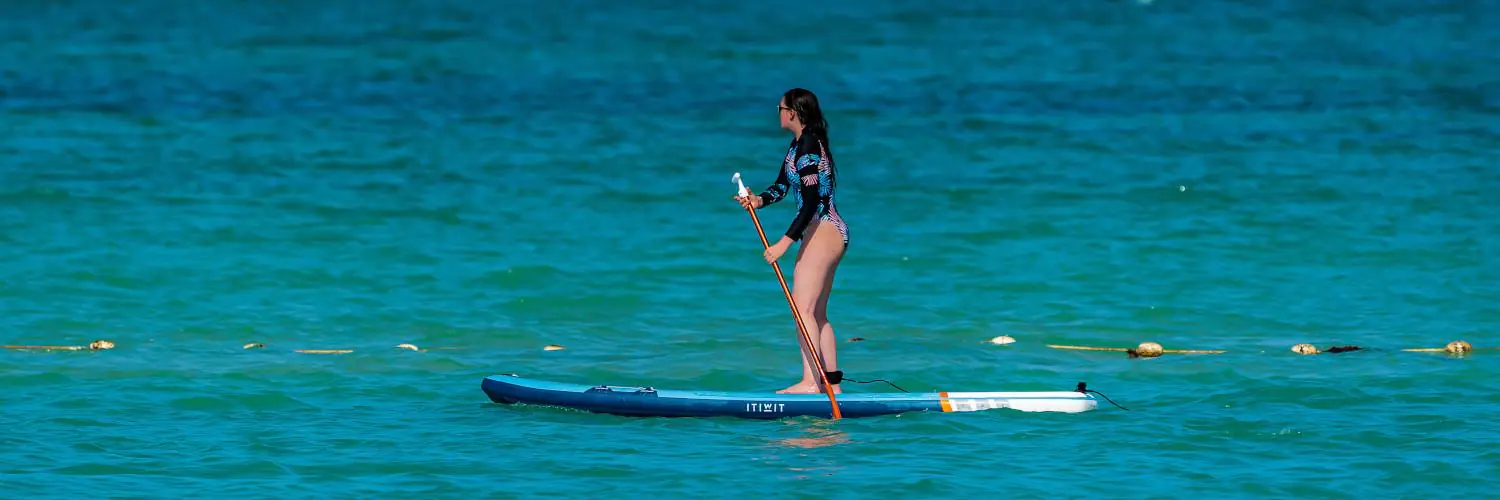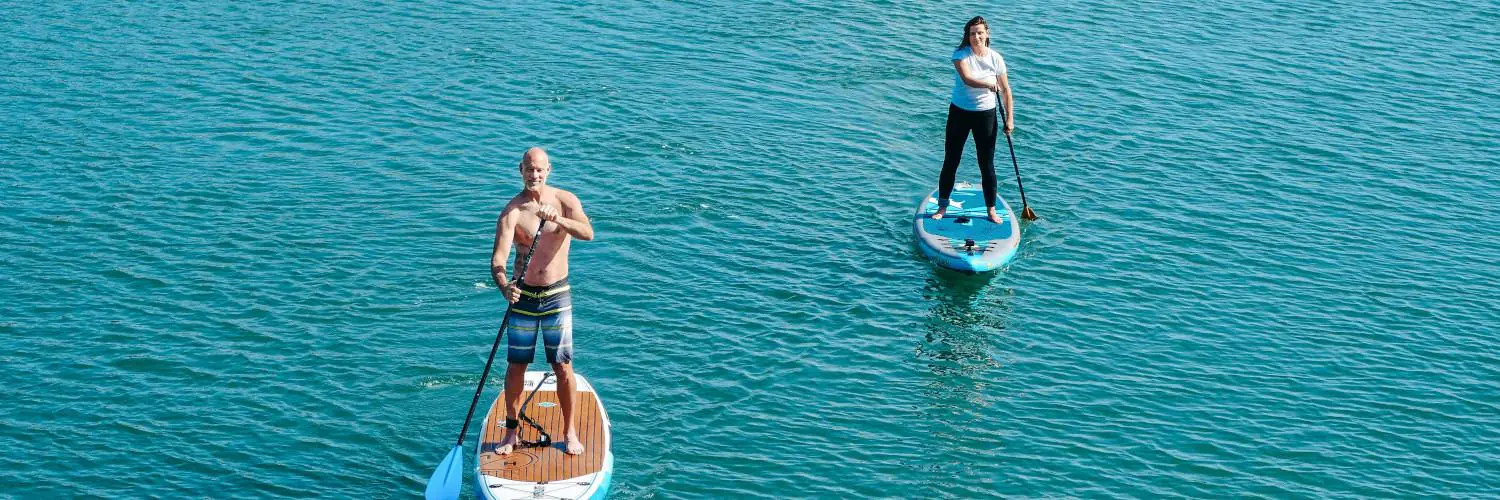Paddleboarding and surfing are both loved water sports. People have different views about which one is better. They have their own fans who think their sport is the best. To help decide which one is better you should knowing the differences between these sports. It also depends on what someone likes and is good at.
While surfing is focused on riding waves, stand up paddleboarding is designed to glide on the surface of the water and, as its name suggests, is performed standing up on a larger board with the aid of a paddle. Learning by beginners is much easier because of this. Also, paddleboarding can be used in different types of water bodies and also activities like yoga and fishing. On the other hand, surfing is generally more challenging. Mastering a unique set of skills is needed to ride waves and doing so can instill a sense of accomplishment.
The skill set, accessibility, and versatility of both stand-up paddle boading and surfing should be considered when comparing the two. It usually depends on individual likes and goals to find out which of the two is for you as they both have their own advantages and challenges. To help you know which you might like more, we’ll discuss their differences.
Table of Contents
Fundamentals of Stand Up Paddle Boarding and Surfing
Stand up paddle boarding (SUP) and surfing are both popular water sports that offer unique experiences on the water. SUP involves standing on a board similar to a surfboard and using a paddle to steer and navigate through the water. Surfing, on the other hand, typically relies on catching and riding waves without the use of a paddle.
Both SUP and surfing can be enjoyed on various water types. Flat water, such as lakes and calm bays, provide ideal conditions for SUP and longboard surfing, while the ocean with its waves is the preferred playground for shortboard surfing. A full-body workout and a unique vantage point to view their surroundings is enjoyed by SUP, while an emphasis on balance, coordination, and timing to ride waves to shore is needed for surfing.
While there are similarities between the equipment used in SUP and surfing, there are distinct differences as well. Stand up paddle boards are generally wider and longer than surfboards to provide more stability, making them suitable for various activities. Surfboards are designed in various shapes and sizes — like the longboard — to cater to specific wave conditions and individual surfing styles.
Ideal for different skills and preferences, each sport has their own unique nuances and challenges. Individuals interested in either activity can choose to explore one or both depending on their personal goals and desired water environments.
Pros and Cons of SUP and Surfing
Benefits of SUP
Stand up paddleboarding (SUP) has several benefits, including its versatility for use on various water surfaces like flatwater, ocean waves, and even whitewater. The wider and more stable design of SUPs makes it easier for beginners to learn and maintain balance. Inflatable SUPs give more float, help with balance, and are also tough, easy to move, and carry. For fitness, SUP gives a full-body workout, works many muscles, and makes core strong.
Cons of SUP
While SUP offers stability, the width and shape may limit its performance in larger waves as compared to traditional surfboards. Additionally, inflatable paddleboards might not provide the same responsiveness as their solid counterparts, mainly in challenging conditions or when maneuvering at high speeds.
Benefits of Surfing
Surfing offers an adrenaline-pumping thrill in riding waves and the challenge of mastering balance and technique as waves vary in size and power. More agility and maneuverability is allowed by the shape and design of surfboards. Furthermore, cardiovascular exercise and upper body strength is provided by surfing.
Cons of Surfing
The learning curve for surfing can be steeper than SUP, primarily due to the challenge of maintaining balance on a narrower board in dynamic wave conditions. Additionally, traditional surfboards may not offer the comfort and stability needed for casual or recreational use on flatwater or for those with limited balance and fitness levels.
Types of Boards
When it comes to stand up paddle boarding (SUP) and surfing, the choice of the board plays an essential role. Both SUPs and surfboards come in various shapes and sizes to cater to different activities and skill levels.
Stand up paddle boards are typically longer and wider than surfboards, making them more stable and versatile for various water conditions. They can be made with fiberglass, wood, wood veneer, or plastic and come in either solid or inflatable versions. Inflatable SUPs are particularly popular for their ease of transport and storage. Yoga, fishing, and leisurely paddling alongside are enjoyed by SUP enthusiasts.
Surfboards, on the other hand, are designed primarily for riding waves in the ocean. They tend to be shorter, with a narrower deck to allow for easier maneuverability and turning on the waves. The size of the waves and the rider’s skill level has required surfboards to come in various shapes and designs.
To end, the decision between a stand-up board and a surfboard depends on what you like and what you want to do. Stand up paddle boards are good for lots of different water activities and offer versatility and stability. Surfboards are for those who want to take on the challenge of riding waves in the ocean.
Board Construction
Stand up paddle boards (SUP) and surfboards have different constructions due to their distinct purposes. SUP boards are generally longer, heavier, and thicker than surfboards, spanning around 14 feet in length and providing more buoyancy. Ideal for calm conditions, they are designed to glide on the water’s surface.
Surfboards, on the other hand, are built to ride waves and respond to the varying surf conditions. They come in various sizes and lengths, usually shorter than SUP boards, with materials such as fiberglass, epoxy resin, or wood combined with expanded polystyrene (EPS) or polyvinyl chloride (PVC) foam for core strength and flexibility.
The performance of a board is influenced by the materials used in construction. Epoxy and carbon fiber are commonly utilized in SUP boards for increased durability and rigidity, while surfboards might also incorporate wood for a more classic feel.
In terms of shape, paddle boards have more volume and a flatter design, helping them glide effortlessly across the water. Surfboards often exhibit a pronounced rocker – the curvature from nose to tail – allowing for easier maneuverability on waves.
The purpose of a board is shown in how it is made: SUPs are great for gliding on calm waters and surfboard are perfect for riding waves. Regardless of the chosen sport, understanding these distinctions can help individuals select the board that best suits their needs.
Techniques and Skills
SUP Techniques
Stand up paddle boarding (SUP) is a fun and beginner-friendly sport that emphasizes stability and balance. A paddle is used to propel oneself across the wate while standing on a wide, stable board. Smooth turns and maneuvers while keeping balance and control are the focus of SUP techniques. The important skills are:
- Balance: Maintaining an upright posture and even weight distribution
- Paddle strokes: Learning different paddle strokes for propulsion and turning
- Maneuvering: Mastering basic turns and navigating various water conditions
Surfing Techniques
Surfing, on the other hand, is a more physically demanding sport that requires a higher level of skill and coordination. Surfers catch and ride waves on narrower surfboards, relying on balance and reactive skills to maneuver on the moving water. Key surfing techniques include:
- Paddling: Efficiently moving through the water to catch waves
- Pop-up: Quickly transitioning from prone to standing position on the surfboard
- Wave riding: Maneuvering and turning on the wave to maintain speed and control
While both SUP and surfing involve balance and maneuvering, the key differences lie in the equipment, water conditions, and the level of skill required. SUP has more versatility and is easier for beginners, while surfing is harder to learn and needs more athleticism.
Waters and Conditions
SUP in Calm or Rough Waters
Stand up paddle boarding (SUP) is a versatile water sport that can be enjoyed in various water conditions. On quiet water, like lakes and rivers, stand-up paddleboarding gives a calm time for new or those wanting a peaceful thing to do. With a bigger and longer board, it’s easier to stay up and go farther. Great for starting out or just having a peaceful time on the water.
But SUP can be done in rough water too, for a harder and fun experience for good riders. As paddlers get better, they can switch to smaller boards for easier control and quick response in ocean waves or rapids.
Surfing in Different Waves
Surfing, in contrast, primarily relies on waves for propulsion and thrills. Riding waves needs special skills. You have to use different boards for different waves. Small waves need short, wide boards. Big waves need long, narrow boards. These boards are made for each wave to match how it moves.
Both standing paddleboarding (SUP) and surfing are fun in different water. Picking one depends on what you like and want to do. Whether seeking a tranquil connection with nature on calm waters or a more dynamic adventure in powerful waves, there’s a water sport well-suited to everyone.
Conclusion
Stand up paddle boarding (SUP) and surfing both offer unique experiences in the water, but determining which is better ultimately depends on personal preference and skill level. SUP is often considered easier for beginners, as the wider board and use of a paddle provide extra stability. This means faster progression and being able to SUP in more places. You can also do yoga, fishing, and long trips on a standup paddleboard because it is more versatile.
But surfing is a classic ocean sport that ties the surfer to the sea’s force. It provides an uncomparable thrill of riding waves, tho it is harder to learn. For those who enjoy adrenaline and a greater challenge, surfing might be the preferred choice.
Both stand-up paddling and surfing have things that make them nice and different. Picking between them depends on what someone likes and wants to do. But, both things help make the body strong, get people outside, and make the mind feel good.

